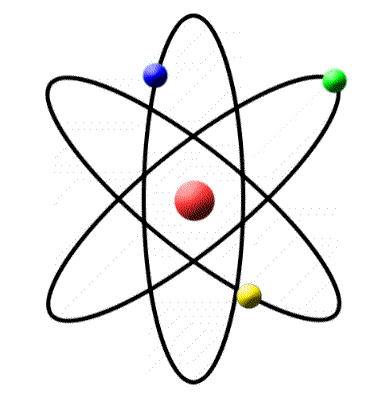Polar molecules are the molecules :
having a permanent electric dipole moment
having zero dipole moment
acquire a dipole moment only in the presence of electric field due to displacement of charges
acquire a dipole moment only when magnetic field is absent
The Correct Option is A
Solution and Explanation
To solve the question, "Polar molecules are the molecules," we need to understand the concept of molecular polarity in chemistry.
Understanding Polar Molecules:
Polar molecules are characterized by the presence of a permanent dipole moment. A dipole moment is a measure of the separation of positive and negative charges within a molecule. This occurs when there is an uneven distribution of electrons between atoms that have different electronegativities. As a result, one part of the molecule becomes more positively charged and the other more negatively charged, forming an electric dipole.
Let's evaluate each option provided in the question:
- Having a permanent electric dipole moment: This is the correct definition of a polar molecule. Molecules such as water (H2O) exhibit a permanent electric dipole moment due to their bent shape and the difference in electronegativity between hydrogen and oxygen.
- Having zero dipole moment: This describes nonpolar molecules. Nonpolar molecules have no permanent dipole moment, as their electron distribution is even.
- Acquire a dipole moment only in the presence of an electric field due to displacement of charges: This describes induced dipole moments, which occur temporarily when a nonpolar molecule is exposed to an external electric field.
- Acquire a dipole moment only when magnetic field is absent: This statement is incorrect and unrelated to the definition of polar molecules, as the dipole moment in molecules is not dependent on the presence of a magnetic field.
Conclusion:
The correct answer is that polar molecules are those having a permanent electric dipole moment. This distinguishes them from nonpolar molecules and explains their unique properties like higher boiling points and solubility in water.
Top Questions on Atoms
- Prove that, in the Bohr model of the hydrogen atom, the time period of revolution of an electron in the \( n \)-th orbit is proportional to \( n^3 \).
- The distance of closest approach of an alpha particle from a nucleus when the alpha particle moves towards a nucleus with a kinetic energy 'E' is 'x'. The distance of closest approach when the alpha particle approaches the same nucleus with kinetic energy 0.4E is
- The ratio of frequencies of second line of Lyman series and third line of Balmer series of hydrogen atom is:
- The ratio of wavelengths of second line in Balmer series and the first line in Lyman series of hydrogen atom is
- Describe the atomic model of Rutherford. How did Bohr model removed its drawbacks?
Questions Asked in NEET exam
- Two identical point masses P and Q, suspended from two separate massless springs of spring constants \(k_1\) and \(k_2\), respectively, oscillate vertically. If their maximum velocities are the same, the ratio of the amplitude of P to the amplitude of Q is :
- NEET (UG) - 2025
- Waves and Oscillations
A sphere of radius R is cut from a larger solid sphere of radius 2R as shown in the figure. The ratio of the moment of inertia of the smaller sphere to that of the rest part of the sphere about the Y-axis is :

- NEET (UG) - 2025
- Moment Of Inertia
- A microscope has an objective of focal length \(f_o = 2\) cm and an eyepiece of focal length \(f_e = 4\) cm. The tube length of the microscope is \(L = 40\) cm. If the distance of distinct vision of eye is \(D = 25\) cm, the magnification in the microscope is:
- NEET (UG) - 2025
- Optical Instruments
AB is a part of an electrical circuit (see figure). The potential difference \(V_A - V_B\), at the instant when current \(i = 2\) A and is increasing at a rate of 1 amp/second is:

- NEET (UG) - 2025
- Electromagnetic Induction and Inductance
- Twins are born to a family that lives next door to you. The twins are a boy and a girl. Which of the following must be true?
- NEET (UG) - 2025
- Genetics
Concepts Used:
Atoms
- The smallest unit of matter indivisible by chemical means is known as an atom.
- The fundamental building block of a chemical element.
- The smallest possible unit of an element that still has all the chemical properties of that element.
- An atom is consisting of a nucleus surrounded by one or more shells of electrons.
- Word origin: from the Greek word atomos, which means uncuttable, something that cannot be divided further.
All matter we encounter in everyday life consists of smallest units called atoms – the air we breath consists of a wildly careening crowd of little groups of atoms, my computer’s keyboard of a tangle of atom chains, the metal surface it rests on is a crystal lattice of atoms. All the variety of matter consists of less than hundred species of atoms (in other words: less than a hundred different chemical elements).

Every atom consists of an nucleus surrounded by a cloud of electrons. Nearly all of the atom’s mass is concentrated in its nucleus, while the structure of the electron cloud determines how the atom can bind to other atoms (in other words: its chemical properties). Every chemical element can be defined via a characteristic number of protons in its nucleus. Atoms that have lost some of their usual number of electrons are called ions. Atoms are extremely small (typical diameters are in the region of tenths of a billionth of a metre = 10-10 metres), and to describe their properties and behaviour, one has to resort to quantum theory.